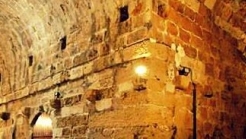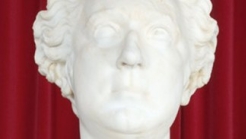

Greece
The Archaeological Museum of Lemnos is in Myrina, at the location Romeikos Gialos. The exhibition aims to letting the visitor follow, through the exhibits and the visual material, the history of Lemnos from the Copper era to the Middle Ages, and to understand the island’s importance in the wider area of North Aegean Sea.
The Museum of Lemnos is situated in a building that was built in the 19th century, and housed the Turkish commander.
The Archaeological Museum of Lemnos is in Myrina, at the location Romeikos Gialos. It is relatively close to the city’s Castle, next to the archaeological site of Myrina, and they form a common archaeological space.
In the Archaeological Museum of Lemnos, the evolution and walk of the island through times is displayed in chronological order, from the copper times to the roman times.
The exhibition aims to letting the visitor follow, through the exhibits and the visual material, the history of Lemnos from the Copper era to the Middle Ages, and to understand the island’s importance in the wider area of North Aegean Sea.


Matala with its beautiful long sandy beach,fine gravel and crystal clear deep water and the carved caves in the rocks,home for the famous Hippies back in ‘60s Matala beach festival takes place every year in June in order to keep the myth of Hippies alive!


The city of Heraklion in the Middle Ages it was known as the "Castle". Rightly named so because of that time was surrounded by walls. Remains of this wall are located scattered within the city.


The house he lived in, where he wrote and died, after being destroyed by the WWII bombardments, was later restructured and still exists to this day. In Solomos’s house, the Company of Corfu Studies founded the Centre for Solomos Studies, which operates as “Solomos Museum”.
1039 Ε 6061 01515 00